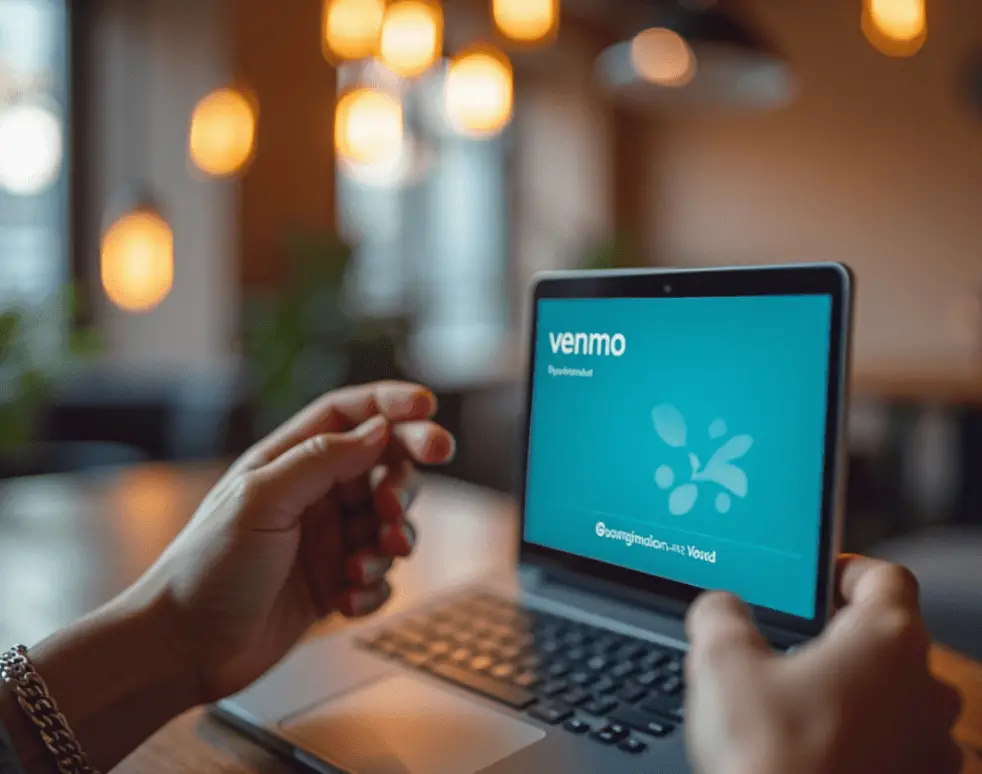Amazon and Venmo are parting ways after a brief partnership that lasted just over a year. The e-commerce giant announced it will stop accepting Venmo payments starting January 10, 2024, marking the end of a collaboration that began in October 2022.
This partnership initially gave Venmo’s 90 million active users in the United States a convenient way to make purchases on Amazon’s platform. The integration was particularly popular among younger shoppers, with about 60% of Gen Z users showing interest in using the service.
Under the leadership of Max Bardon, then Vice President of Amazon Worldwide Payments, the partnership aimed to provide customers with flexible payment options during the busy holiday season.
While Amazon will continue to accept Venmo debit and credit cards, the direct payment option through the Venmo app will no longer be available. This change comes as another setback for PayPal, Venmo’s parent company, which has seen its stock value decline by 21% over the past year.
Despite the discontinuation, both companies maintain they have a strong relationship, with Amazon still offering nearly a dozen other payment options for customers, including credit cards, debit cards, checking accounts, and installment plan.
Historical Context
The partnership between Amazon and Venmo began with a groundbreaking announcement in November 2021, marking a significant shift in the e-commerce payment landscape. PayPal, Venmo’s parent company, struck this deal to bring its popular payment service to the world’s largest online marketplace, targeting Venmo’s 80 million users in the United States.
The actual implementation kicked off on October 25, 2022, with a strategic rollout plan. Amazon started with a select group of customers and expanded the service to all U.S. shoppers by Black Friday 2022. This timing was crucial as it coincided with the peak holiday shopping season, offering consumers more flexibility in their payment options. The service gained particular traction among younger demographics, with 47% of Venmo users expressing interest in using the service for online purchases.
The partnership lasted approximately 14 months, from October 2022 to January 10, 2024. During this period, Venmo processed an impressive volume of payments, contributing to its overall $244 billion in transaction volume for 2022. The integration helped Venmo maintain its position as the second most-used online payment method in the U.S., holding a 38% market share.
Throughout the partnership, Amazon customers could link their Venmo accounts directly to their Amazon wallets, enabling seamless transactions without requiring a traditional debit or credit card.
This integration was particularly significant as it represented Amazon’s first major third-party payment partnership in the U.S., breaking from its traditional reliance on direct card payments and its co-branded cards with JPMorgan Chase and Synchrony.
The collaboration demonstrated the evolving nature of digital payments and consumer preferences, especially among the Millennial and Gen Z demographics who made up the largest segment of Venmo users at 26.24%.
Key Changes
Amazon is pulling the plug on Venmo payments starting January 10, 2024. This change comes just 14 months after they teamed up, leaving many shoppers scratching their heads.
For current users, the clock is ticking. If you’ve got Venmo set up in your Amazon wallet, you can keep using it until the cut-off date. After that, you’ll need to switch gears. It’s like when your favorite coffee shop stops serving your go-to drink – you gotta find a new favorite!
But don’t worry, Amazon isn’t leaving you high and dry. They’ve got a whole bunch of other ways to pay:
- Credit cards
- Debit cards
- Checking accounts
- Installment plans
It’s like a payment buffet – pick what works best for you!
This change might sting a bit for the 90 million active Venmo users in the U.S. who enjoyed this quick and easy payment option. But here’s the silver lining: Venmo debit and credit cards will still work on Amazon. So if you’ve got one of those, you’re still in the game.
For Prime members using Venmo for their subscription, it’s time to update your payment info. Don’t wait until the last minute, or you might miss out on your next-day delivery fix!
Why the breakup? Amazon and Venmo are keeping mum on the details. But some folks think it might be because not enough people were using it. It’s like throwing a party and only a few people show up – sometimes you gotta call it quits.
This change is part of a bigger shake-up in the e-commerce payment world. A study by PYMNTS Intelligence found that payment choice is super important to shoppers – even more than free delivery! So Amazon’s move might ruffle some feathers.
Impact Analysis
The discontinuation of Venmo on Amazon has created ripples across the digital payment landscape. From a consumer perspective, this change affects nearly 90 million active Venmo users in the U.S. who enjoyed the convenience of direct payments1. Research by PYMNTS Intelligence shows that payment choice ranks above 33 other factors, including free delivery, in consumer shopping decisions.
The business impact has been significant for PayPal, Venmo’s parent company. Their stock dropped by 1.8% following the announcement, contributing to a 22% decline year-to-date. Daniel Keyes, a senior analyst at Javelin Strategy & Research, notes this isn’t a good look for PayPal and Venmo, as Amazon represented an exciting opportunity to tap into new payment markets.
The market response has been mixed. Evercore ISI analyst David Togut suggests the partnership ended due to limited user adoption. A study by Citi Retail Services found that 90% of shoppers want multiple payment options, making this move somewhat counterintuitive. However, Amazon maintains flexibility by continuing to accept Venmo debit and credit cards while offering nearly a dozen other payment methods.
The change particularly affects younger demographics, with Gen Z and Millennials making up the largest segment of Venmo users at 26.24%. This shift in the payment landscape might influence future partnerships between major e-commerce platforms and digital payment providers, as companies balance user convenience with operational efficiency.
Technical Aspects
The payment system transition from Venmo on Amazon involves several technical changes. Starting January 10, 2024, the direct Venmo integration will be completely removed from Amazon’s payment infrastructure. Users who currently have Venmo enabled in their Amazon wallet must transition to alternative payment methods.
For the payment infrastructure, Amazon maintains nearly a dozen payment options, including:
- Traditional credit and debit cards
- Checking accounts via ACH transfers
- Installment plans
- Amazon store cards
The integration changes are particularly noteworthy for subscription services. Prime members and other subscription holders using Venmo need to update their payment settings in the “Your Memberships and Subscriptions” section. While the direct Venmo account integration is ending, Venmo debit and credit cards will continue working through Mastercard and Visa networks respectively.
According to Datos Insights, this technical shift might be related to the emergence of new payment alternatives, particularly the FedNow real-time payments network. The transition aligns with broader industry trends, as noted by TSG consultancy, suggesting Amazon might be steering non-card transactions toward different channels.
For users making the switch, Amazon has implemented a gradual transition period. The system will continue processing Venmo payments for existing users until the cutoff date, while new users can no longer add Venmo as a payment method. This phased approach helps maintain service continuity while facilitating the technical transition to alternative payment methods.
Future Implications
The digital payment landscape is experiencing rapid transformation in 2024. The digital wallet market is projected to grow from $47.71 billion in 2024 to a whopping $97.54 billion by 2028, showing a remarkable CAGR of 19.6%.
Digital wallet trends are shifting dramatically. In-app payment usage has reached 60% in the United States, jumping 8 percentage points since 2019. More surprisingly, 28% of consumers now use digital wallets for in-store purchases, up from 19% in 2019. In fact, one in five digital wallet users often leave their physical wallets at home.
The e-commerce landscape is adapting to these changes through:
- Integration of artificial intelligence
- Focus on cross-border transactions
- Enhanced collaboration with merchants
Alternative payment methods are gaining significant traction. About 59% of consumers will abandon their shopping carts if their preferred payment option isn’t available. This has pushed major platforms to diversify their payment options. For instance, despite Amazon’s split with Venmo, they still maintain nearly a dozen payment alternatives.
The future points toward omnichannel payment processing, where online and in-store experiences merge seamlessly. Social commerce is expanding, with younger demographics driving adoption of new payment methods. PayPal’s research shows that Gen Z and Millennials make up the largest segment of digital payment users, representing a significant shift in consumer behavior.
These changes suggest a future where digital payments become increasingly integrated into daily life, with a focus on convenience, security, and flexibility. The market is moving toward a more diverse payment ecosystem, where traditional and alternative payment methods coexist to serve different consumer preferences.
Stakeholder Response
Amazon’s position remains straightforward but reserved. Their spokesperson confirms they’ll continue offering “nearly a dozen other payment options” including debit cards, credit cards, checking accounts, and installment plans. The company maintains a business-as-usual stance, focusing on payment flexibility rather than explaining the partnership’s end.
PayPal and Venmo have taken a diplomatic approach. Their official statement emphasizes a “strong relationship with Amazon” while confirming the mutual agreement to disable the payment option. Under new CEO Alex Chriss, PayPal appears to be pivoting toward refining Venmo’s features, including group expense tracking and cryptocurrency trading.
The customer impact is significant, affecting Venmo’s 58 million users as of March 2023. Daniel Keyes, senior analyst at Javelin Strategy & Research, notes this isn’t favorable for PayPal and Venmo, as the Amazon partnership represented an exciting opportunity to reach new markets.
Market analysts have weighed in on the decision:
- David Togut from Evercore Inc. suggests the partnership ended due to limited user adoption
- Richard Crone, a payments consultant, points out that the navigation to pay with Venmo required more steps than other payment providers
The timing of the announcement, allowing usage through the holiday season until January 10, 2024, suggests an amicable split between the companies. While Venmo debit and credit cards will still work on Amazon, the direct payment option’s removal marks a significant shift in the digital payment landscape.
Market Context
The e-commerce payment landscape is experiencing a dramatic shift in 2024. Digital wallets now dominate with 50% of global online transactions, followed by credit cards at 22% and debit cards at 12%. The market is projected to grow from $4.08 trillion in 2023 to a staggering $12.90 trillion by 2032.
Competition among payment providers is fierce. Major players like Amazon, PayPal, Apple, and Visa are constantly innovating to maintain market share. Digital wallet usage is expected to surge to 61% of all e-commerce spending by 2027, pushing traditional payment methods to adapt or decline.
Key industry shifts include:
- Buy Now Pay Later services growing to $160.7 billion by 2032
- Account-to-Account (A2A) payments rising to 8% market share
- Mobile wallets becoming standard in retail transactions
Regional differences are significant. In North America, digital wallets lead with 37% market share, while credit cards follow at 33%. Meanwhile, APAC leads global adoption with wallets accounting for 50% of point-of-sale spending.
The industry is seeing remarkable innovation in payment security and user experience. Real-time payments and cross-border transactions are becoming seamless, with initiatives like Project Nexus connecting major Asian markets. Consumer behavior is shifting too – 59% of shoppers will abandon their cart if their preferred payment method isn’t available.
This transformation is driven by younger generations, with Gen Z and Millennials leading the adoption of alternative payment methods. The trend suggests a future where digital payments become increasingly integrated into daily life, with a focus on convenience and flexibility.
Read More: Nhentai.het A Comprehensive Overview
Alternative Solutions
After Venmo’s departure, Amazon continues to offer numerous payment alternatives. Here’s what shoppers can still use:
Primary Payment Options
- Traditional credit cards (Visa, Mastercard, American Express)
- Debit cards
- Checking accounts
- Amazon Store Card
- Installment plans
Digital Alternatives
The digital wallet market is booming, with usage reaching 60% for in-app purchases. Popular alternatives include:
- Apple Pay
- Google Pay
- Amazon Pay
- Cash App
Special Features
Venmo users can still use their Venmo-branded debit and credit cards on Amazon. For budget-conscious shoppers, options include:
- Buy Now, Pay Later services
- FSA/HSA cards for eligible items
- SNAP EBT in select states
The shift aligns with broader payment trends, as 28% of consumers now use digital wallets for in-store purchases, up from 19% in 2019. Research by Citi Retail Services shows that 90% of shoppers prefer having multiple payment options.
For those seeking Venmo alternatives, popular choices include:
- PayPal (available in 200 countries)
- Cash App (offers private transactions with $cashtags)
- Meta Pay with Messenger (allows transfers up to $10,000)
These alternatives provide similar convenience while offering unique features like international transfers, higher spending limits, or social payment features.
Conclusion
The split between Amazon and Venmo marks a significant shift in the digital payment landscape. After just 14 months of partnership, this change affects 58 million Venmo users who must now switch to alternative payment methods by January 10, 2024.
The breakup reflects broader industry trends, with digital wallets now handling 50% of global online transactions. While Amazon maintains nearly a dozen payment options, including credit cards and installment plans, this move signals a potential reshaping of e-commerce payment strategies.
For PayPal, Venmo’s parent company, this represents a strategic challenge under new CEO Alex Chriss. Their stock dropped 1.8% following the announcement, contributing to an 18% decline year-to-date. However, Venmo users can still use their branded debit and credit cards on Amazon.
This change highlights the evolving nature of digital payments, where convenience, security, and user adoption drive business decisions. As the e-commerce landscape continues to transform, both companies remain open to future collaborations while focusing on their core strengths.


